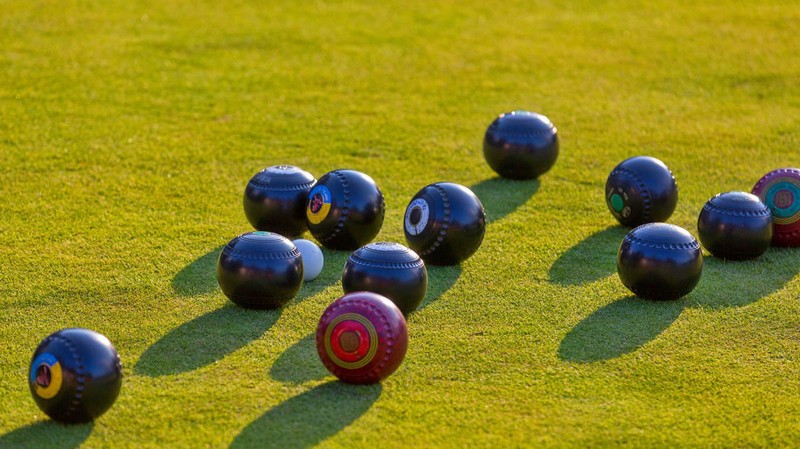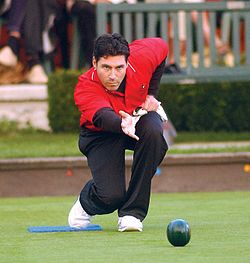
You know a game must be fun if it’s stuck around for eight centuries–and that’s how long folks have been playing lawn bowling (in some form or another). It was the invention of the lawn mower in 1830, allowing for smooth, freshly cut playing fields, that really popularized the sport. Our homepage features balls called ‘woods,’ or ‘bowls’, that competitors use during game play. The objective is to roll the grapefruit-sized balls toward a smaller ball called a ‘jack,’ and points are awarded to the players that are closest. Fancy a game?
It has been traced certainly to the 13th century, and conjecturally to the 12th. William Fitzstephen (d. about 1190), in his biography of Thomas Becket, gives a graphic sketch of the London of his day and, writing of the summer amusements of the young men, says that on holidays they were "exercised in Leaping, Shooting, Wrestling, Casting of Stones [in jactu lapidum], and Throwing of Javelins fitted with Loops for the Purpose, which they strive to fling before the Mark; they also use Bucklers, like fighting Men."[1] It is commonly supposed that by jactus lapidum, Fitzstephen meant the game of bowls, but though it is possible that round stones may sometimes have been employed in an early variety of the game - and there is a record of iron bowls being used, though at a much later date, on festive occasions at Nairn, - nevertheless the inference seems unwarranted. The jactus lapidum of which he speaks may have been more akin to shot put. It is beyond dispute, however, that the game, at any rate in a rudimentary form, was played in the 13th century. A manuscript of that period in the royal library, Windsor (No. 20, E iv.), contains a drawing representing two players aiming at a small cone instead of an earthenware ball or jack. The world's oldest surviving bowling green is the Southampton Old Bowling Green, which was first used in 1299.

The patenting of the first lawn mower in 1830, in Britain, is strongly believed to have been the catalyst, worldwide, for the preparation of modern-style greens, sporting ovals, playing fields, pitches, grass courts, etc. This is turn led to the codification of modern rules for many sports, including lawn bowls, most football codes, lawn tennis and others.[4]
National Bowling Associations were established in the late 1800s. In the then Victorian Colony (now State of Victoria in Australia), the (Royal) Victorian Bowling Association was formed in 1880 and The Scottish Bowling Association was established in 1892, although there had been a failed attempt in 1848 by 200 Scottish clubs.
Today the sport is played in over 40 countries with more than 50 member national authorities. The home of the modern game is still Scotland with the World Bowls centre in Edinburgh at Caledonia House,1 Redheughs Rigg, South Gyle, Edinburgh, EH12 9DQ.
Comments